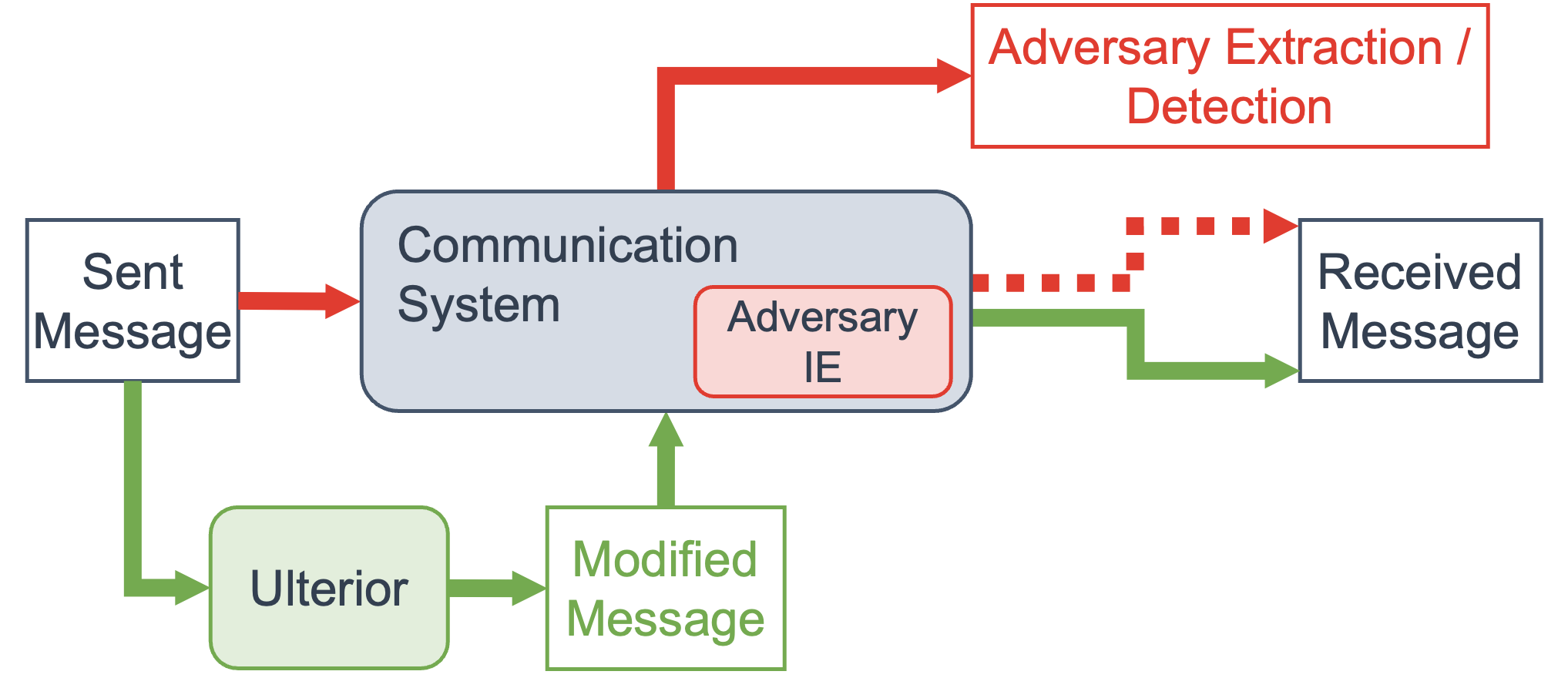Ulterior
2023 — Principal Investigator
This internally funded research project considered the problem of text communication between a sender and receiver in an environment where information extraction (IE) capabilities are deployed. The goal of the Ulterior project was to investigate and develop approaches to thwart these capabilities, and in so doing identify a) specific methods for obscuring text content from IE capabilities b) insights into general approaches for text obfuscation and c) potential approaches for hardening IE capabilities against attacks like those identified in (a) and (b).
 Ulterior paradigm; the default (red) path shows a message that may be captured by an IE capability and may or may not be received; the Ulterior (green) path shows a message that is modified and thus thwarts the IE capability.
Ulterior paradigm; the default (red) path shows a message that may be captured by an IE capability and may or may not be received; the Ulterior (green) path shows a message that is modified and thus thwarts the IE capability.
We investigated two scenarios for this project. In the first, we used a publicly available tool for steganography, which transformed documents of one topic (e.g., world news) into another (e.g., sports). Our experiments showed that while steganography is very effective for thwarting IE capabilities (text is transformed, and thus information cannot be reliably extracted) the approach is brittle: changes in whitespace or punctuation can corrupt decoding, and steganography in general can be easily detected by off-the-shelf document classifiers.
In the second scenario, we experimented with simple text transformations that could thwart IE without hindering human interpretability (e.g., random misspellings, swapping characters with homoglyphs). One particularly effective method was to add nonsensical disjunctions (e.g., impossible times or places alongside the original alternatives). In our document classification, relation extraction, and summarization experiments, these transformations were an effective way to decrease IE performance (measured against transformer-based models like DistilBERT and RoBERTa).
Of special note was the influence of nonsensical disjunctions on publicly available Large Language Model (LLM) summarization. By adding entities that would have been trivial for a human reader to disregard, we exploited the underlying absence of reasoning capabilities in the LLM which meaningfully degraded the quality of the generated summaries. In one example, the LLM asserted that one team won a championship when the article described their loss, and inanother the summary described a fictional character being elected president.
